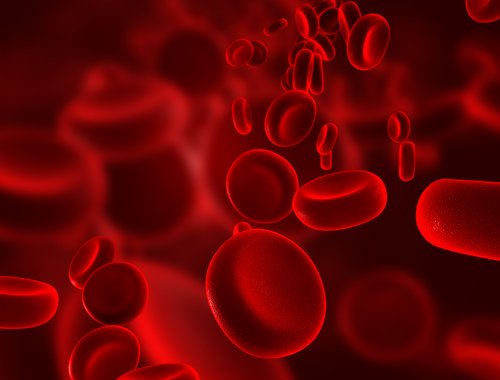Thrombosis During Pregnancy: A Dangerous Combination

Let’s remember that blood clots can affect the circulation of blood within the body. The result is what’s known as thrombosis. Learning more about this condition can help you prevent it.
During pregnancy, women’s chances of suffering from thrombosis increase. This is because her blood is more prone to forming blood clots thanks to certain changes in coagulation or in the placenta.
The uterus also increases in size, reducing vascular circulation, especially in lower extremities. Learn why thrombosis is especially risky during pregnancy.
What is thrombosis?
The term thrombosis refers to a clot that forms in the interior or blood vessels, specifically in a person’s extremities. It’s a complication that can occur during a woman’s pregnancy.
Thrombosis is more usual in women with varicose veins, who are sedentary, obese, or over the age of 30. The risk of suffering thrombosis increases as pregnancy advances.
Thrombosis can appear superficially or internally, in the veins. These clots can cause serious complications, as the clots can release and obstruct blood flow, causing a pulmonary embolism. Pregnancy increases a women’s chances of suffering thrombosis by 10%.
Symptoms of thrombosis during pregnancy
It’s very common for women to experience fluid retention in their cells during pregnancy – especially in their legs. However, the following symptoms may accompany the swelling:
- Fever.
- Coughing and thoracic pain.
- Heat and swelling in the calf.
- Tachycardia and difficulty breathing.
- Reddening of the affected extremity.
- Intense pain that extends out of the calf muscle.
Possible causes of thrombosis during pregnancy
While pregnancy already acts as the leading risk factor, the following issues can also come into play:
- Obesity.
- Sedentarianism.
- Pregnancies involving twins, triplets, etc.
- High blood pressure.
- Preeclampsia and eclampsia.
- Hormonal alterations.
- Intestinal alterations.
- C-section or premature birth.
- Blood clot disorders.
- Pressure as a result of fetal growth.
Helping to lower the effects of these causes will greatly reduce the possibility of suffering thrombosis during pregnancy.
Complications during pregnancy due to the presence of thrombosis
Suffering thrombosis during pregnancy can cause the following consequences:
- Limited fetal growth.
- Miscarriage towards the third trimester of pregnancy.
- Detached placenta. This consists of the partial or total separation of the placenta from the uterine wall. This complication also involves a serious loss of blood, placing the lives of both the baby and mother at risk.
Treatment of thrombosis during pregnancy
The treatment of this condition will depend on the type of thrombosis that the woman is suffering. These types include the following:
- Superficial Thrombosis. The treatment for cases of superficial thrombosis involves preventative measures. These include elevating legs, physical exercise, bandaging legs, using special elastic socks, etc. On some occasions, women may need to take a blood thinner, such as aspirin.
- Deep vein thrombosis (DVT). In order to treat deep vein thrombosis, doctors will prescribe blood thinners such as heparin – first intravenously, then subcutaneously.
If the clot reaches the lungs, it can produce a pulmonary embolism. Once this is detected, it requires immediate specialized medical attention and hospitalization.

How to prevent thrombosis during pregnancy?
Basically, the best way to avoid this pathology is to perform exercises that increase blood flow. Besides exercise, pregnant women can also do the following:
- Avoid working in high temperatures.
- Maintain a healthy, balanced diet that is rich in nutrients.
- Avoid remaining seated or lying down for long periods of time.
- Go for frequent brisk walks, at least 150 minutes per week.
- Avoid using tight-fitting clothes that impede the normal flow of blood.
- Avoid sitting with legs crossed for long periods of time, as this makes the return of blood more difficult.
- Ingest medications prescribed by a doctor to prevent and treat thrombosis during pregnancy.
- If you’re on bedrest, ask your doctor to give you suggestions for the rotation and elevation of your legs.
- Keep specific records of coagulation studies, eco dopplers, blood pressure, vein explorations, etc.
- Another excellent alternative is to be extremely attentive to your diet. Avoid all foods that have a high sodium content.
To summarize, thrombosis is very dangerous when it occurs during pregnancy. It requires early detection to prevent complications.
At the same time, it’s important that pregnant women pay special attention to their symptoms and drink plenty of water. This will considerably reduce their risks of suffering thrombosis.
This text is provided for informational purposes only and does not replace consultation with a professional. If in doubt, consult your specialist.








